
Dr John Perry
Appointed director of pathology, Perry managed an expansion of the department. He became medical director from 1960 and oversaw the move from Carlton to Parkville.

Child Psychology Department Established
Led by Ruth Wertheim and John Williams.

Mr Peter Jones
Jones began a long surgical career at the hospital. He was a prolific researcher, publisher and regarded as a wonderful teacher. In 1970 he became chairman of the senior medical staff. He also designed the coat of arms for the hospital.

Royal Assent Granted
After seven years of lobbying from the Committee of Management, royal assent is granted. The hospital is officially re-named ‘The Royal Children’s Hospital’ (RCH).

Dame Elisabeth Murdoch AC, DBE
A member of the Committee of Management since 1933, Dame Elisabeth was President from 1954-1965. Her commitment and vision saw many improvements for the hospital, including the move to new premises in Parkville. In 1986 she became a co-founder of the Murdoch Institute for Research into Birth Defects.

Medical Records Department Established
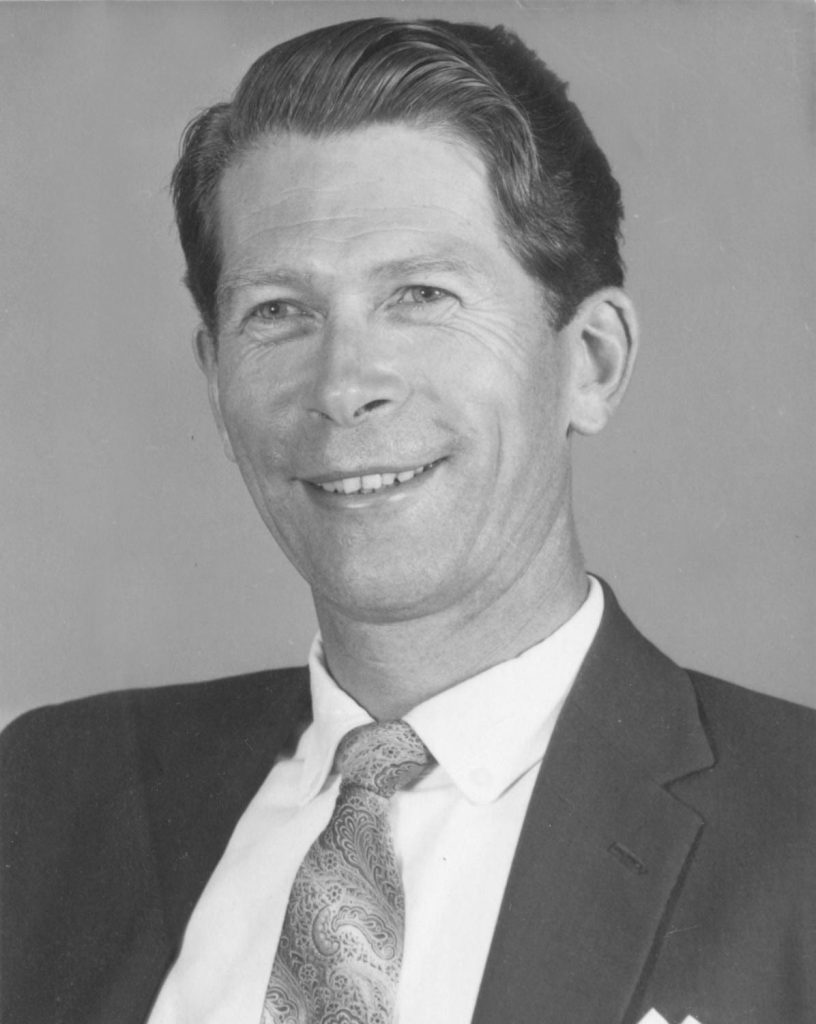
Dr Harry Hiller
Appointed director of radiology, Hiller introduced many improvements in the way of equipment and techniques.

Dr Winston Rickards AM
Appointed as the first director of psychiatry, Rickards developed a multi-disciplinary approach to child mental health and his research achieved many breakthroughs.

Burns Unit Established
Dr A Murray Clarke led the establishment in response to the high occurrence-rate of patients admitted with burns.
Television Broadcasting in Australia Commenced
September 16th, 1956
Australian broadcasting began and television sets were placed in the wards for the patients’ entertainment.
Development of a Postgraduate Course in Paediatric Nursing
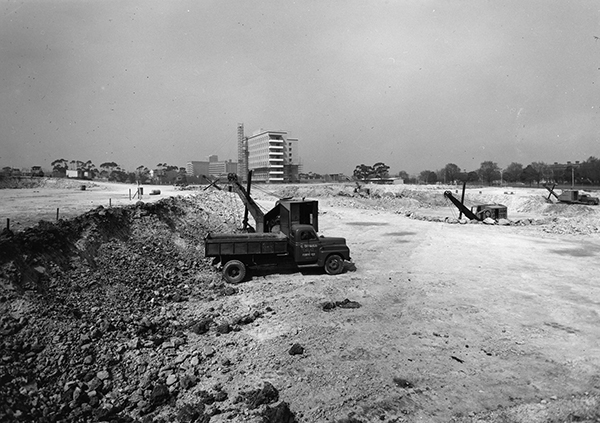
Beginning of Work on the Main Block for the New Parkville Hospital
Image credit: Laurie Richards Studio
The Committee of Management Introduced Provisions and Scholarships to Encourage Research

A New Nurses’ Home
The first building to be completed on the new Parkville lot - nurses were shuttled back and forth to the Carlton hospital.
Image credit: Laurie Richards Studio

Eddie Keir OAM
Keir became chief audiologist and remained in the role until 1997. He had a background in electrical engineering and child psychology and under his guidance the Audiology Department addressed the behavioural problems of children with hearing impairments.

The Royal Children’s Hospital Research Foundation Established
The foundation’s objectives were to support and promote research in all areas of child health.

Dorothy Cook
Cook became chief pharmacist and was instrumental in the rapid growth of the department, particularly after the move to Parkville.
Image credit: Laurie Richards Studio
Record-breaking Fundraiser
A large fundraising appeal was held to raise money for the new Parkville hospital. The target was £400,000, with £500,000 raised. At the time it was the largest amount ever contributed in an appeal to a single charity in Australia.

Dental Clinic Formally Established
The hospital has provided dental services since 1899, however the full-time appointment of Associate Professor Roger Hall as paediatric dentist in 1960 resulted in the development and independence of the department.

The Spina Bifida Clinic Established
Co-ordinated by Dr Keys Smith, the clinic was soon the second biggest in the world.

Volunteer Services Established
Carmen Winter held a key role in organising this new service.
Nurse Elizabeth Jackson
Jackson became one of the first nurses to be sponsored to train overseas. Her leadership of the Psychiatric Unit was crucial to its success.
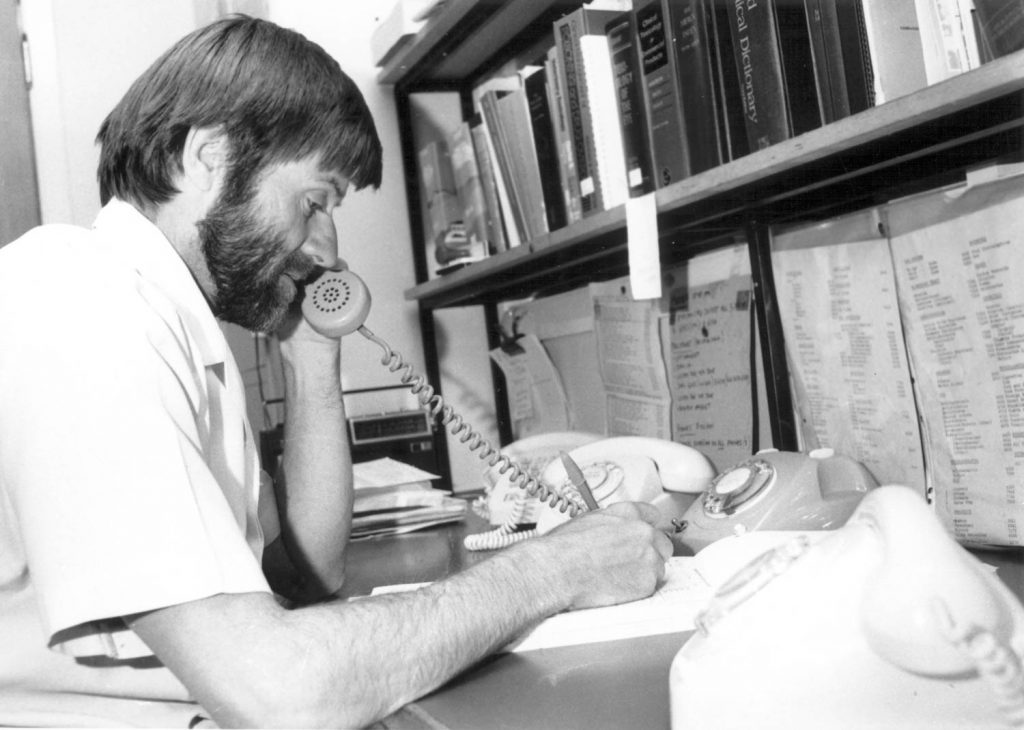
Poisons Information Centre Opened
Dr John Perry was a key instigator of the establishment of a poisons register and resource for parents and health professionals.
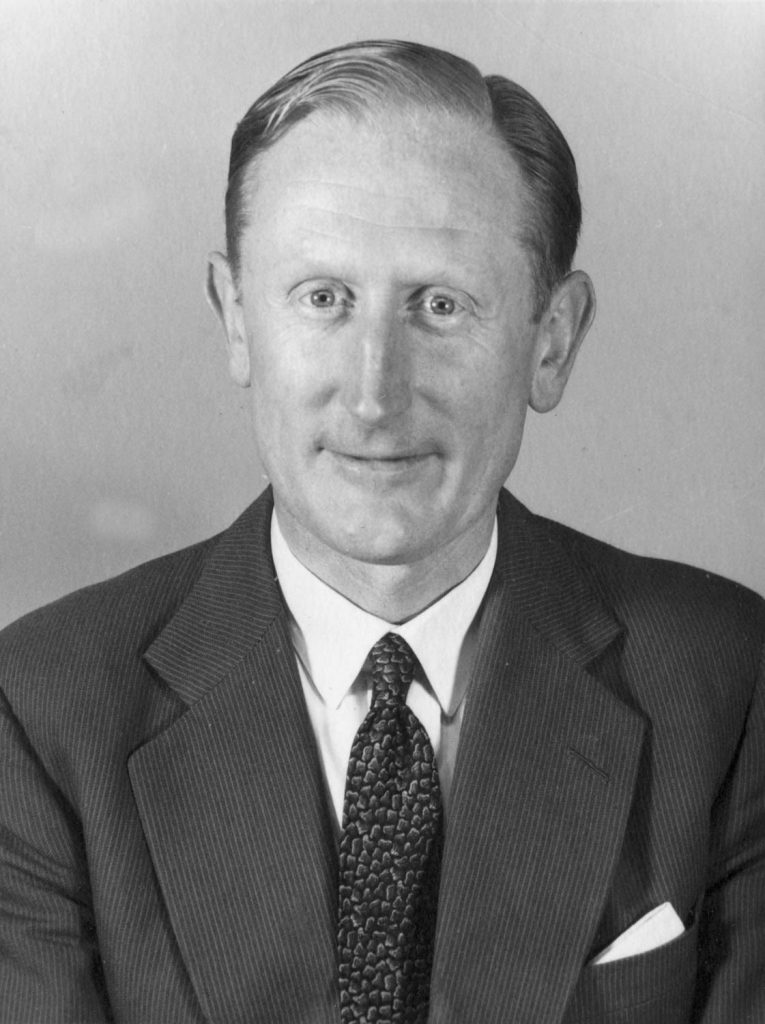
Endocrine Clinic Formally Established
Of particular relevance to the care of children, Dr Norman Wettenhall AM’s interest in endocrinology was formalised as a specialty area of research.
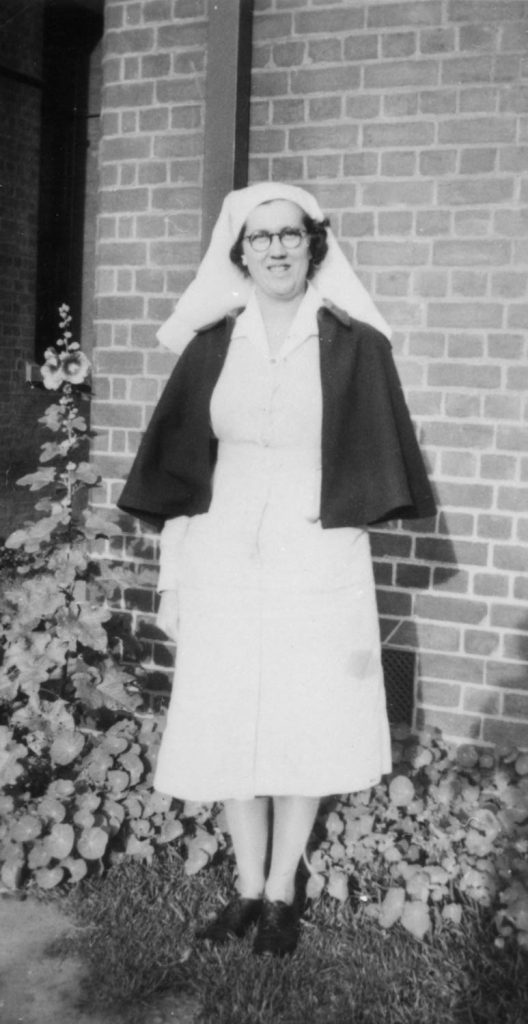
Matron Joan Gendle
The first hospital-trained nurse to gain the director of nursing position. Gendle oversaw the nursing staff during the move to Parkville and stayed in the role until 1969.
Move to New Campus Completed
January 20th, 1963
Patients are moved from the Carlton hospital to the new Parkville hospital.

Official Parkville Opening
February 25th, 1963
Queen Elizabeth II and Prince Philip officially open the new premises at Parkville.
A Designated Intensive Care Unit Area is Established
Anaesthetists Dr John Stocks and Dr Ian McDonald began to implement prolonged endotracheal intubation.
Mr E Durham Smith AO
After many years managing the paediatric clinic at the Alfred Hospital, Smith became surgical consultant at the RCH, where he greatly contributed to paediatric urology research and surgical developments.

Dame Patricia Mackinnon DBE, CBE
A member of the Committee of Management since 1949, Dame Patricia was president from 1965-1979. Her devotion and capable leadership saw her positive influence on the hospital during the ‘golden age’ in the new building.

Dr L.E.G. Sloan
Appointed medical director, Sloan was instrumental in addressing the issues that arose with a reduction in funding in the late 1970s. He was with the hospital until 1981.

Professor David Danks AO
Danks was a physician at the hospital who specialised in treating patients with liver disease, before moving into genetics research. In 1986 he became a co-founder of the Murdoch Institute for Research into Birth Defects.

Dr Kester Brown AM
Appointed as medical officer in 1967, Brown became the director of anaesthesia in 1974 and stayed in the role until 2000.
Dr Ian Hopkins OAM
The first in Australia to specialise in paediatric neurology, Hopkins was assigned as head of neurology, where he introduced many improvements and technological advancements.
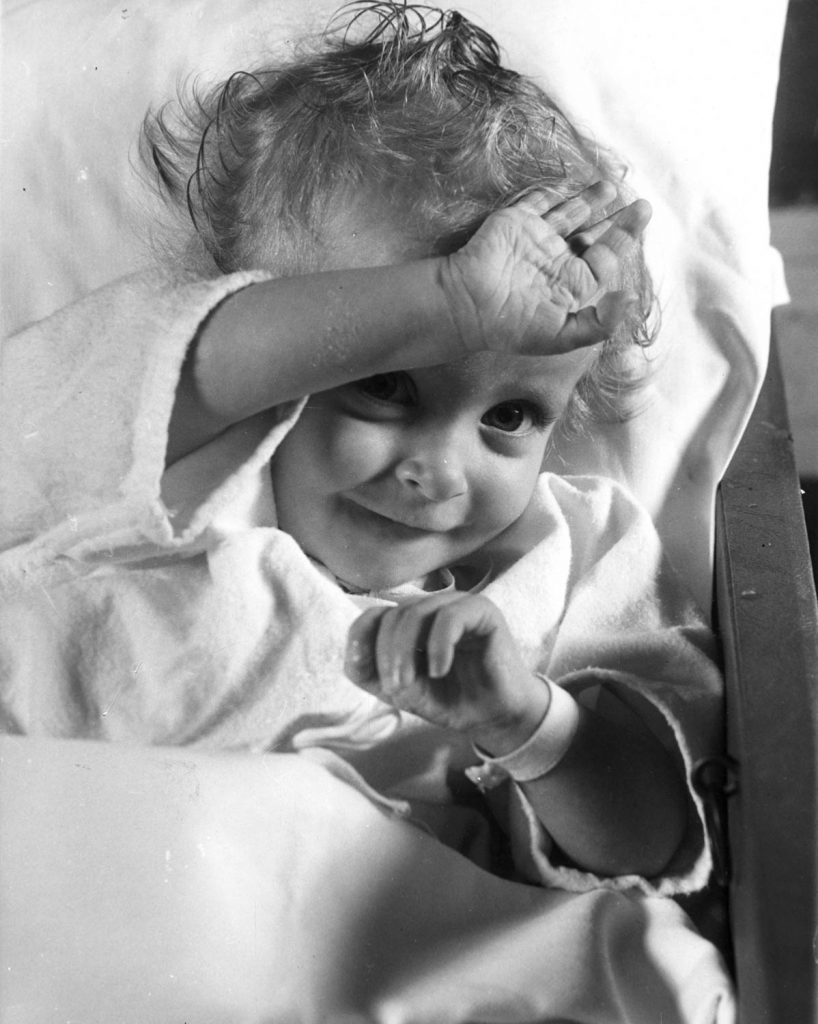
Cardiology Department Formally Established
Cardiology as a specialisation had been developed since the 1950s under the leadership of Dr Mostyn Powell. Powell’s trainee Dr Alex Venables was appointed director.
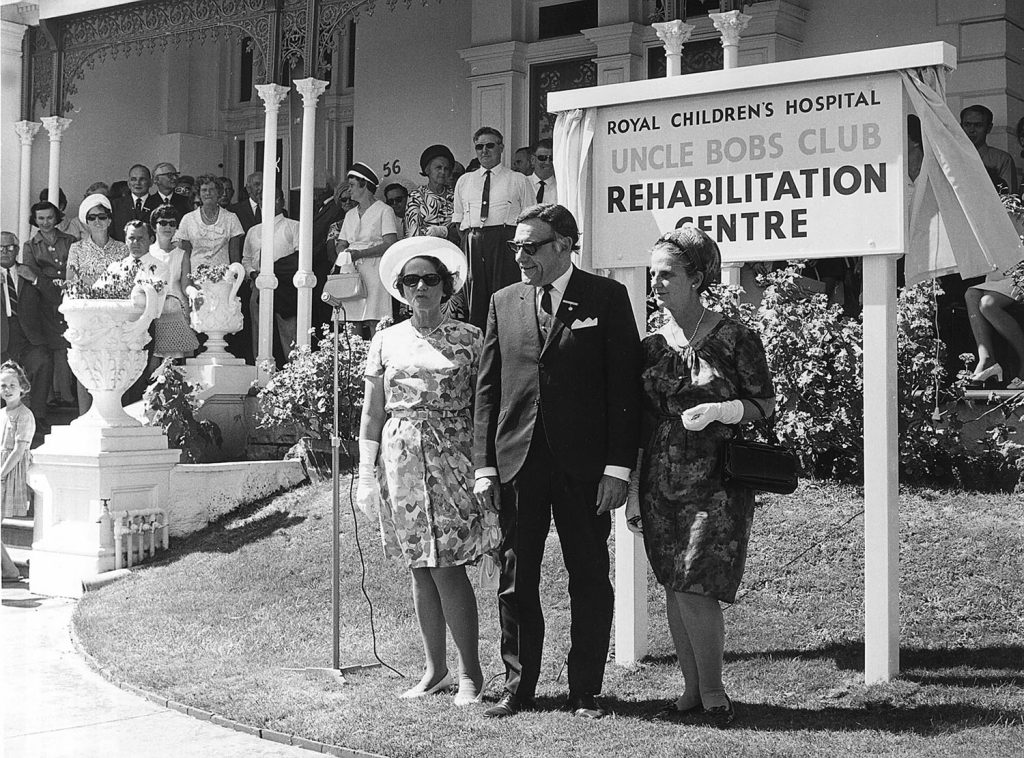
Opening of the Uncle Bobs Club Rehabilitation Centre, Chapman Street, North Melbourne
The Uncle Bobs club raised funds to refurbish the building for use as a rehabilitation centre.
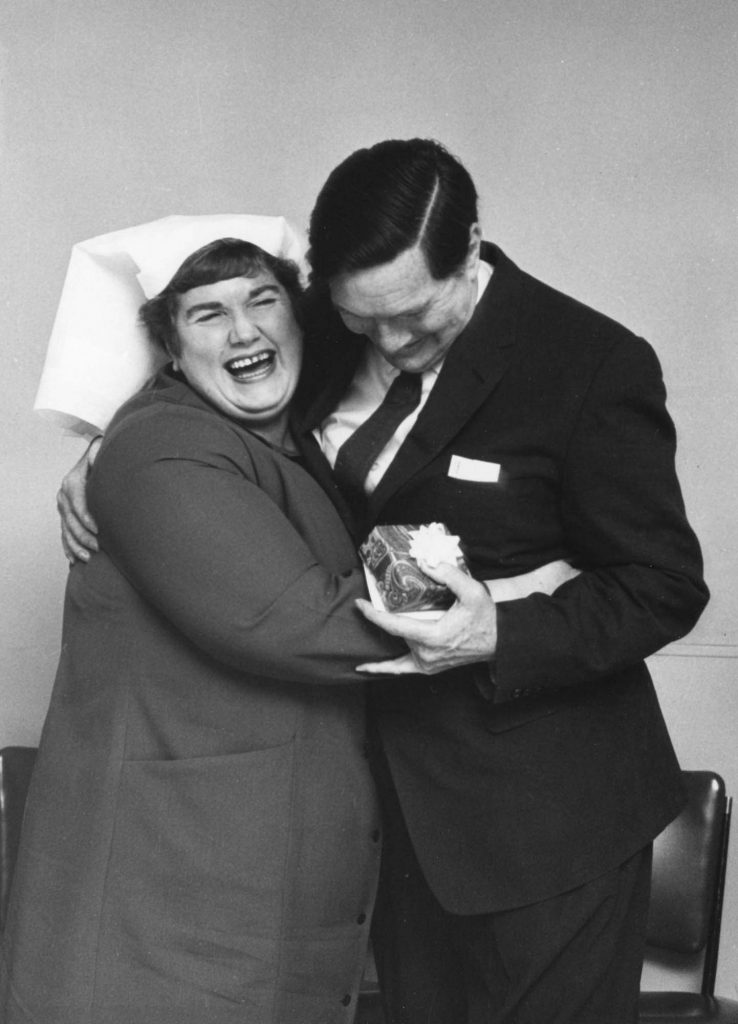
Matron Elaine Orr
Previously matron at The Children’s Orthopaedic Hospital, Orr was recruited as director of nursing for the main hospital. She introduced modernisations to nursing uniforms.

The Royal Children’s Hospital School
The school was first established as an annex to The Children's Orthopaedic Hospital. When the long-term patients moved to Parkville in 1971, the school did, too. Now known as the RCH Education Institute, the department keeps patients connected to learning.
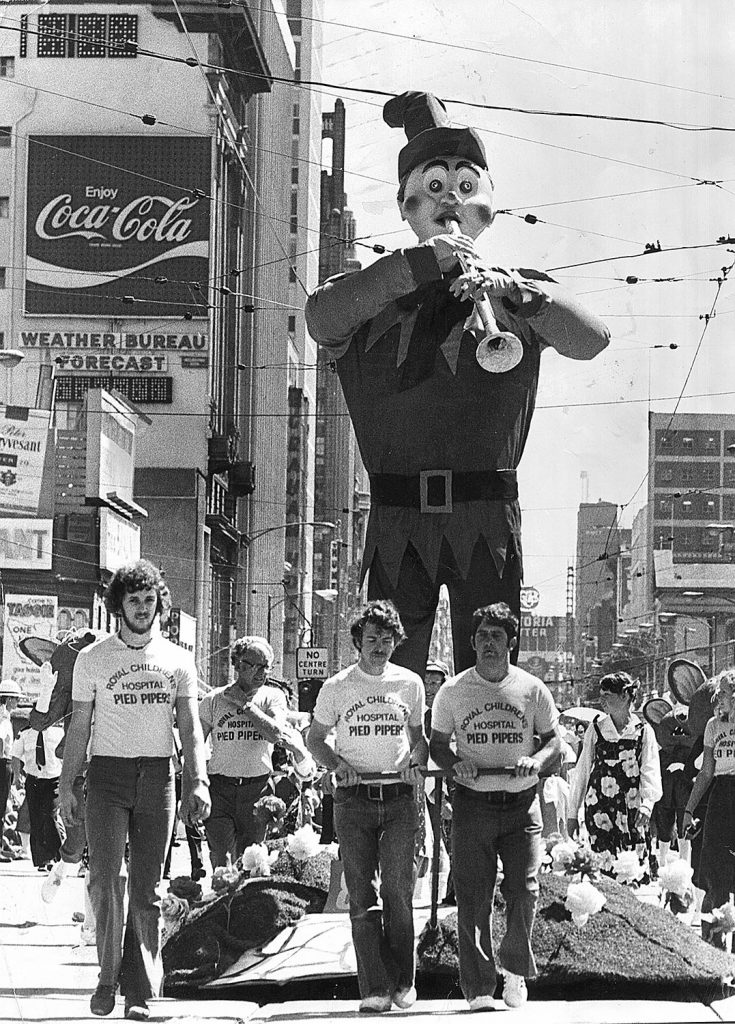
The Pied Pipers
The Pied Pipers was formed by a young group of people who were inspired to fundraise for the hospital after participating in the Good Friday Appeal.

Publication of Jones’ Clinical Paediatric Surgery
Edited by Mr Peter Jones, most of the hospital’s surgeons contributed to this textbook and demonstrated the broad range of expertise at the hospital.
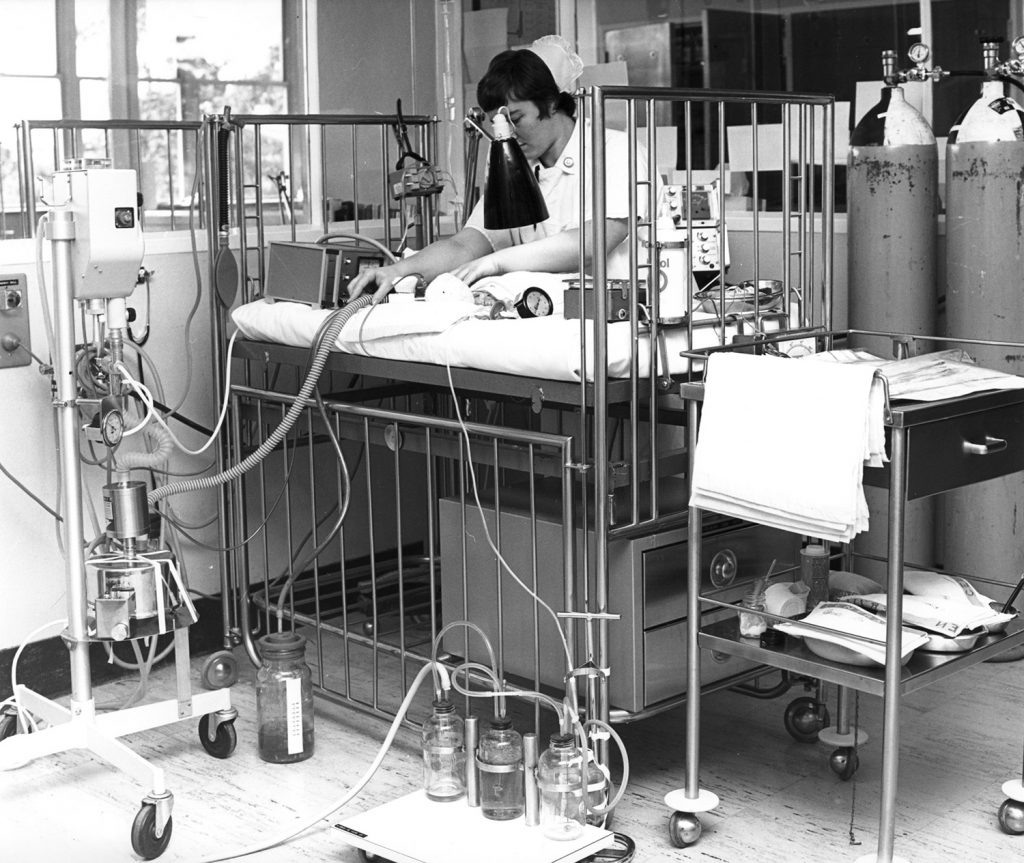
Dr John Stocks Trialled a New Method to Keep Babies’ Lungs Inflated
Continuous Positive Airway Pressure (CPAP) treatment saves the lives of hundreds of premature babies.

The Hospital Celebrates its Centenary

International Paediatric Surgery Congress
Leading paediatric surgeons presented papers at the hospital, organised by surgeon Mr Nate Myers AM.

Nephrology Clinic Formally Established
Under direction of Dr David McCredie AM, facilities for dialysis treatment of children were established.

Rotavirus Discovered
Professor Ruth Bishop AC, Dr Rudge Townley, Professor Geoff Davidson, and Associate Professor Ian Holmes, discovered rotavirus, a common cause of gastroenteritis.
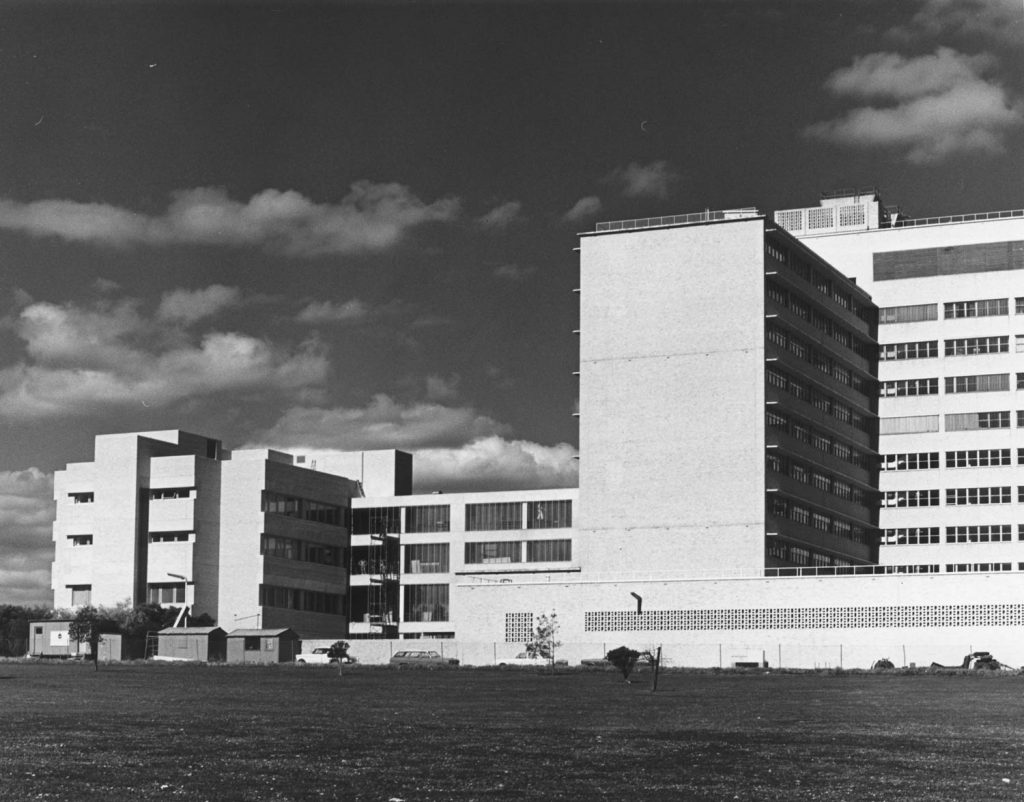
New North-west Building Opened
Department of Thoracic Medicine Established
Professor Peter Phelan AM was appointed director.
Intensive Care Department Established
Initially part of the Anaesthetic Department, Intensive Care became autonomous, with Dr Geoff Barker as director.
Dedicated Psychiatric Ward Established

Two Sets of Conjoined Twins Safely Separated
In August the Foo twins, Yew Sun and Yew Te, were separated by Mr Peter Jones. In October the Priestly twins, Grant and Andrew, were separated in an operation headed by Mr Nate Myers AM.
Medibank
July 1st, 1975
Commonwealth-funded health insurance scheme implemented. It was subject to many changes in subsequent fluctuating political climates.
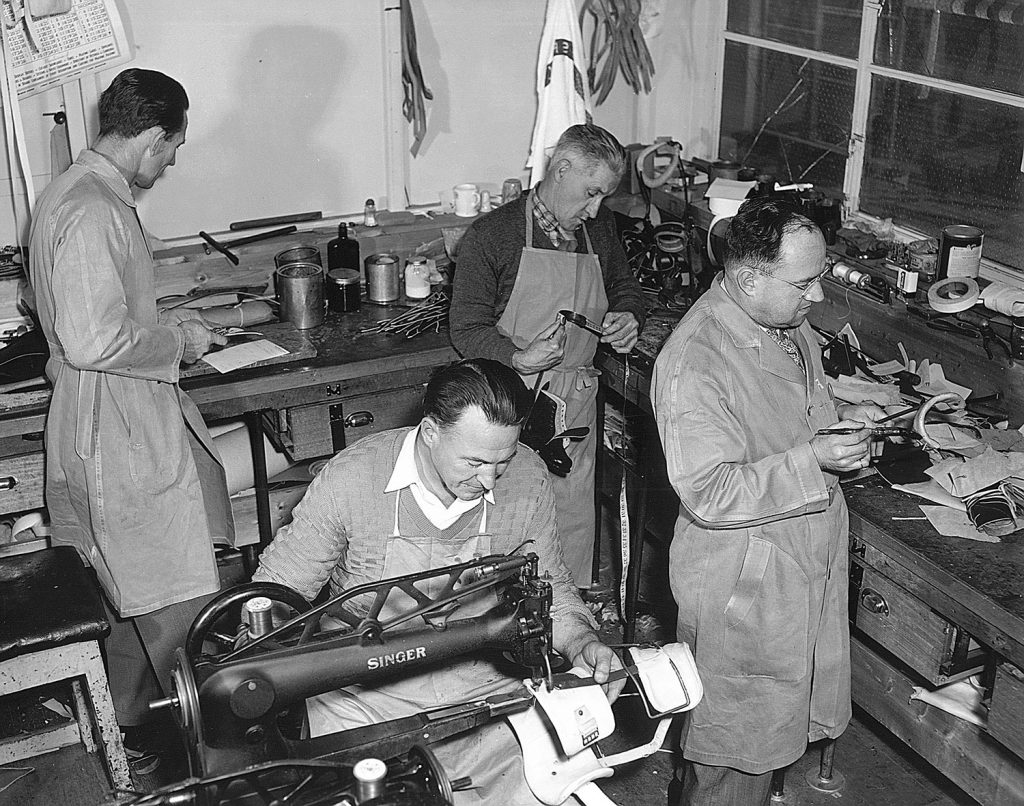
Splint Shop Became Orthotic Department
From the 1950s, due to increased efficacy and implementation of immunisation, contagious diseases such as bone tuberculosis began to decline. With the diminished need for splints, in the 1970s the Splint Shop began to serve a wider range of conditions, using synthetic materials to create orthoses and prosthetics.

Ferguson House Formally Opened
Situated on Flemington Road, Ferguson House provided accommodation for hospital staff members.
Ultrasound Technology Introduced at RCH
Dr Valerie Mayne secured the purchase of an Octoson ultrasound machine, which was an Australian design.
Play Therapy Program Instigated
Fiona Anderson was head-hunted from Great Ormond Street Children’s Hospital to develop the programme.
Dr Max Robinson AM
Appointed professor at the University of Melbourne, Robinson introduced formal clinical exams.
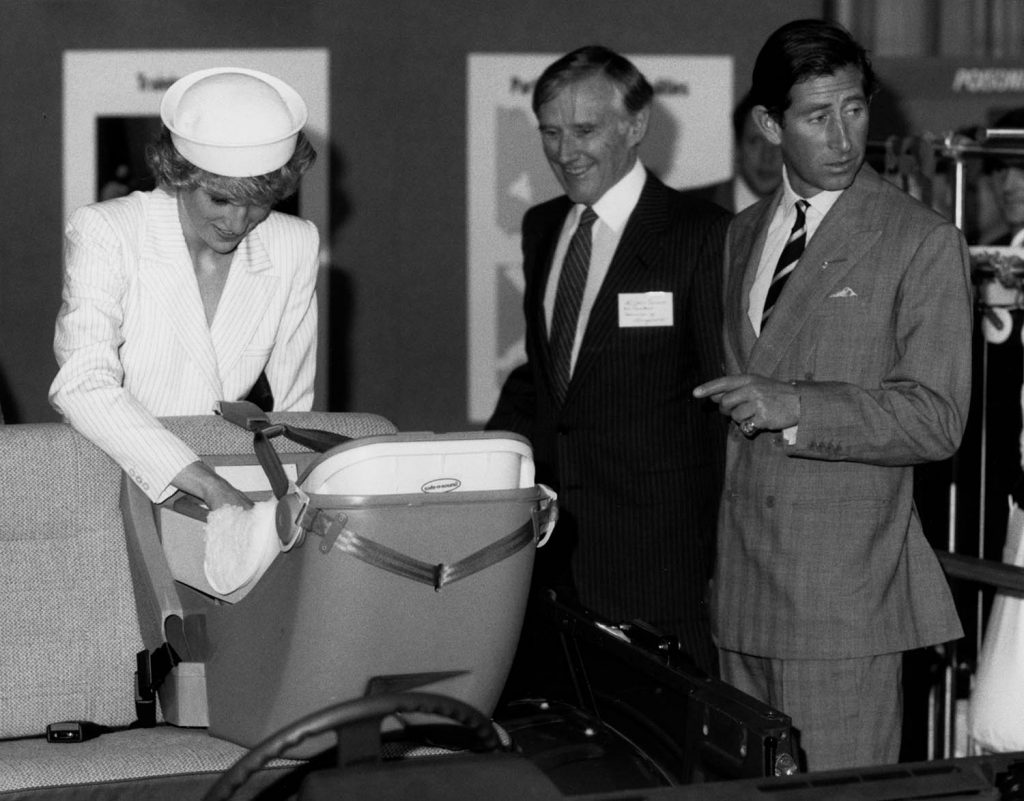
Child Accident Prevention Centre
Established by a former staff member, Dr A Murray Clarke, with the aim of preventing accidents through education and research.
Change of Management Structure
State legislation mandated that the committee size was reduced from 21 to 12 members. New members were appointed by the Minister of Health and the hospital’s political autonomy was reduced.
Paediatric Emergency Transport Service (PETS) Established
Lady Rosemary Derham
Elected as president of the hospital's Board of Management, Lady Derham held this position until 1983.
Uncle Bobs Club Child Development Centre
In use by the hospital for rehabilitation since 1969, the building was renamed and is still in use for early childhood intervention services.
Reorganisation of Hospital into a Divisional Structure
The hospital took steps to meet accreditation criteria and clarify the administrative structure.

Dr Barry Catchlove AM
Appointed as CEO in 1981, Catchlove made a great many structural and staffing changes. He held the position until 1991.
Outpatient Facilities for Teenagers Established
First Male President of the Hospital Committee
Ken Keown was elected as president of the hospital Board of Management, ending the long history of a woman-led management committee.

Interpreter Services Established
Silvio Proy became the hospital’s first formal medical interpreter in 1971. Interpreter Services became its own department in 1982 and Proy established standards and training for professional interpreters. Prior to this, volunteer services had been heavily relied on to interpret for families.
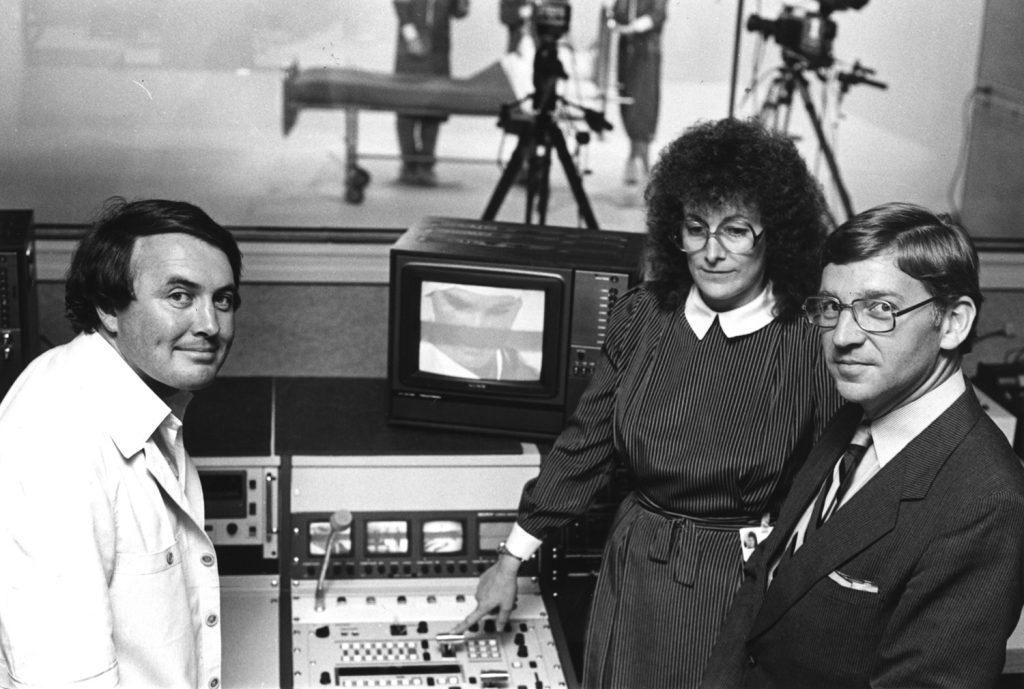
Educational Resource Centre
Led by Lynda Stephens, photographers, film makers, designers and illustrators began a program of creating educational and entertaining content used by the hospital and clinics state-wide.
First Aboriginal Liaison Officer
Ruby Lako was the first person to be appointed to this new role, funded by the Health Commission. It was a difficult position – the indigenous status of patients was not recorded by the hospital at the time.
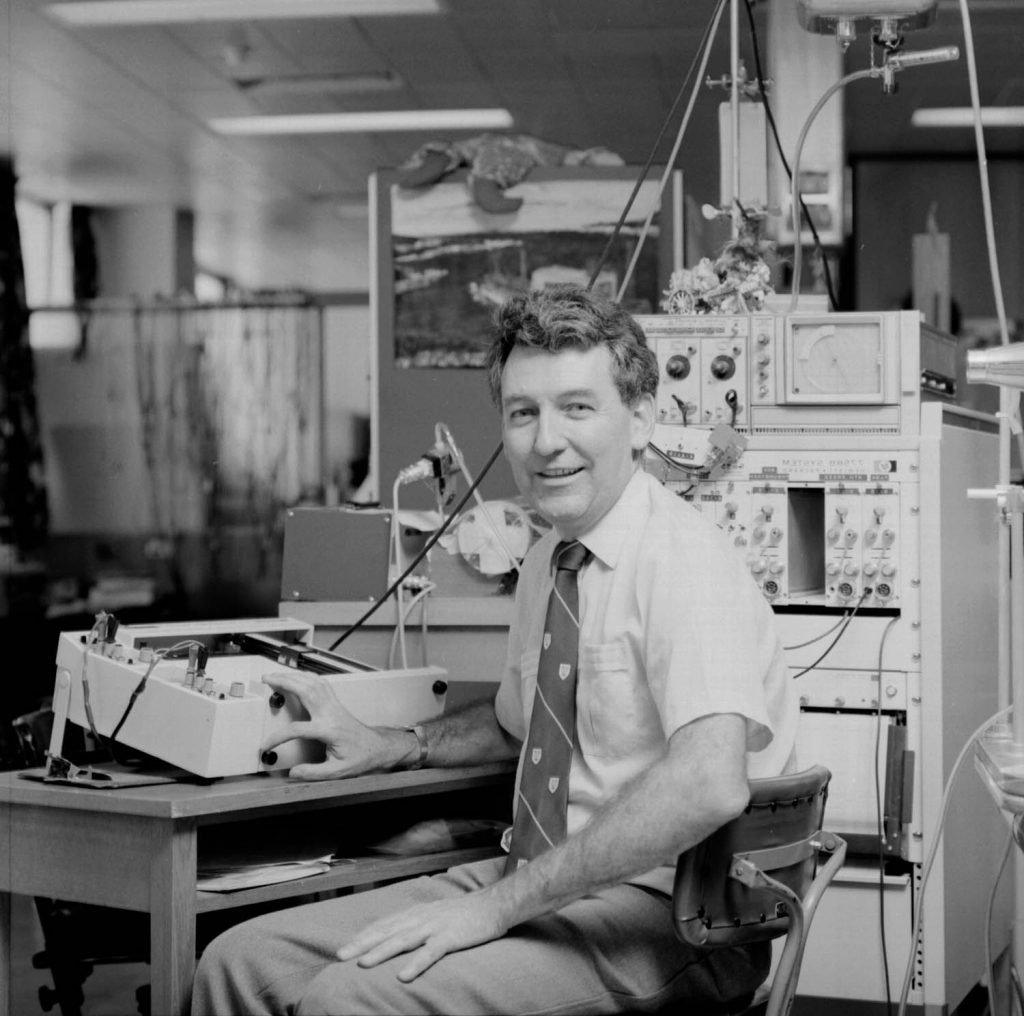
Professor Peter Phelan AM
Phelan was installed as professor of paediatrics at the University of Melbourne. Revision of the paediatric curriculum allowed increased specialisation in paediatrics.
Child Psychotherapy Department Became Autonomous
Medicare Introduced
Hawke government legislation reinstated universal health care.
Establishment of the Adolescent Ward
This allowed children over age 14 to receive treatment at the hospital.
Speech Pathology
Speech pathology became a stand-alone department, with Bronwyn Parry-Fielder in the lead role, which she held for 22 years.

Ronald McDonald House Opened on Gatehouse Street
Victorian Nurses’ Strike
The hospital’s paediatric nurses are among the few statewide who remained ‘on the job’.
Foundation of the Murdoch Institute for Research into Birth Defects
The Murdoch Institute was a leading centre for genetics research, worldwide.
Gatehouse Centre Established
Originally named the Child Protection Unit, the department’s focus is on children suffering from abuse and maltreatment.
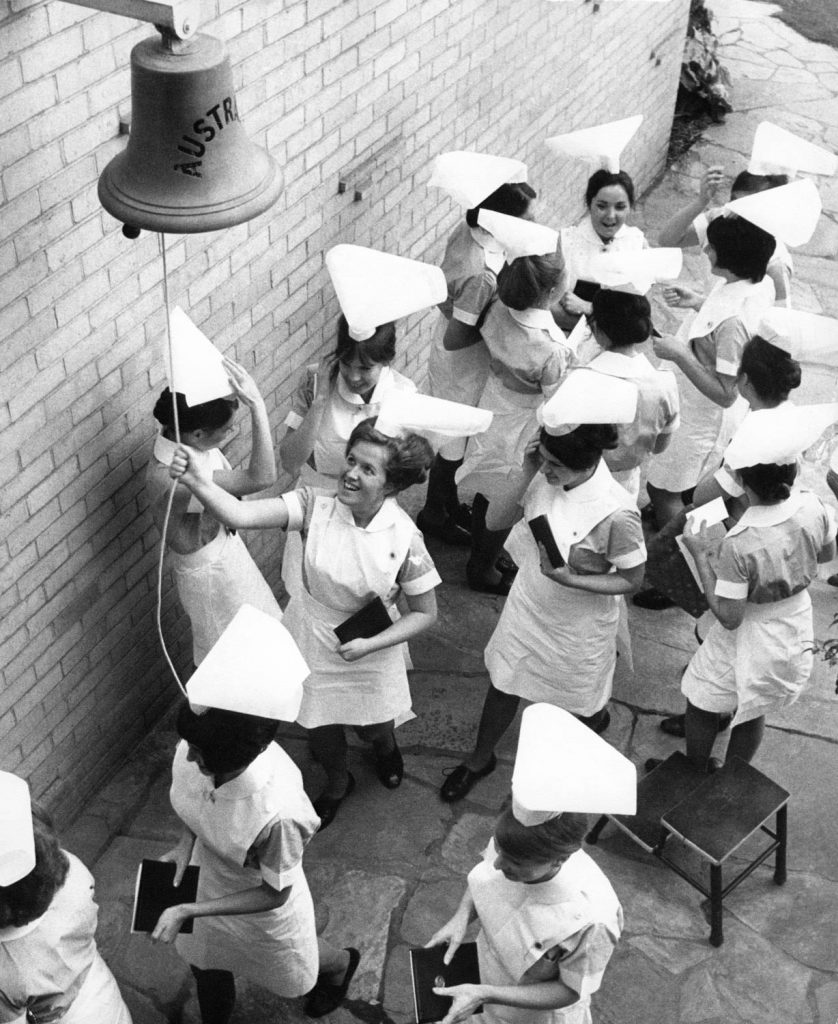
End of Hospital-run Nurse Training
Last students graduated from the school of nursing run by the hospital.
Murdoch Institute launched POSSUM
Developed by the hospital’s staff, including Professor David Danks AO, Dr Agnes Bankier OAM and Dr David Pitt, POSSUM was designed to record and identify birth defect syndromes.
RCH Medical Alumni Association Established
The group is membered by medical and dental professionals who have spent time working at the RCH.

The Royal Children’s Hospital Foundation Established
The RCH Foundation's first fundraising project was a special building appeal.
Image credit: Alvin Aquino
First Heart Transplant at the RCH
October 5th, 1988
Chief Cardiac Surgeon Mr Roger Mee AO performed the operation, with the support of a talented cardiac team.

Good Friday Appeal Front Entry Building Opened
Care by Parent Unit Opened
Debt Crisis
The hospital was forced to dispose of assets and impose financial restrictions. Around 350 staff were cut.

‘Going Nuts with Macadamia’ First Aired
The Education Resource Team produced the hospital's first in-house television show. Now known as ‘Be Positive’, the show provides patients with a morale boost, entertainment, and familiarisation with hospital equipment and procedures.
[Proudly sponsored by the team and customers of Woolworths.]
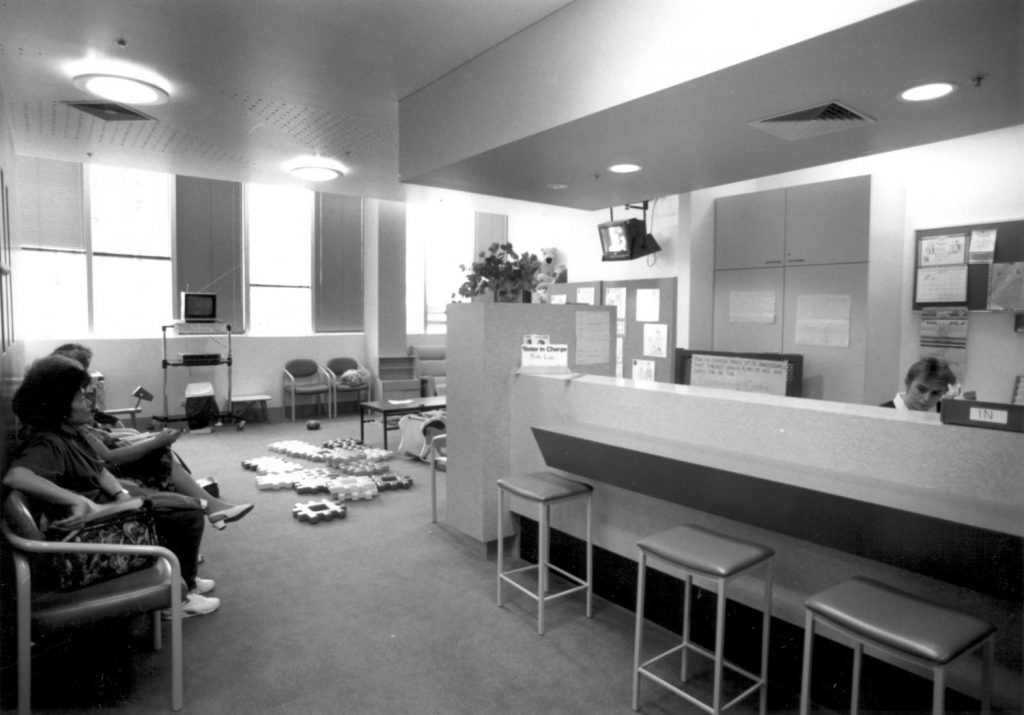
Day Centre Opened

Music Therapy Program Established
Funded by the University of Melbourne.
Aboriginal Liaison Policy Advisory Committee Established
The committee consisted of hospital staff and Indigenous community members.
Introduction of High Frequency Oscillatory Ventilation
Centre for Community Child Health Established
The centre supports health and development of vulnerable and disadvantaged children.
Professor Margot Prior AO
After a distinguished career as an orchestral musician, Prior returned to studying and became a Professor of Clinical Psychology. At the RCH, she was the first woman in Australia to be appointed as director of psychology.
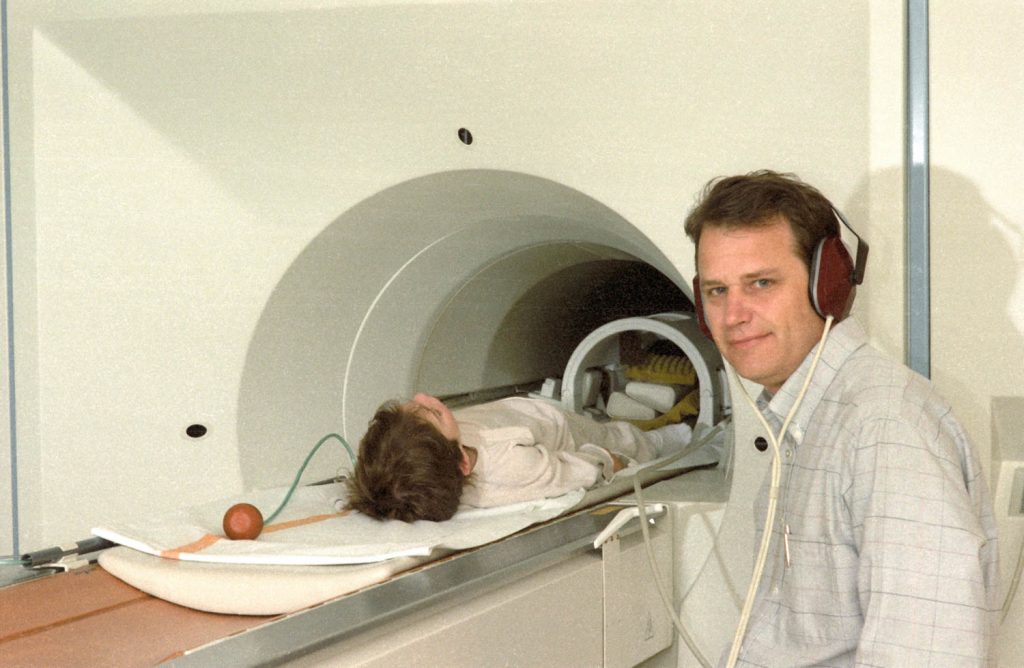
Magnetic Resonance Imaging (MRI) Equipment First Used at the Hospital
Image credit: Lloyd Ellis
First Liver Transplant
Baby Jordyn was the youngest liver transplant patient in Australia.
Women’s and Children’s Health Care Network
Victorian Government strategy merged the Children’s and the Women’s Hospital. This partnership was in place until 2004.

First Aboriginal Family Support Worker
Neville Austin was appointed to this role, which was created after much advocacy from the Aboriginal Liaison Policy Advisory Committee.
Image credit: Peta Philp
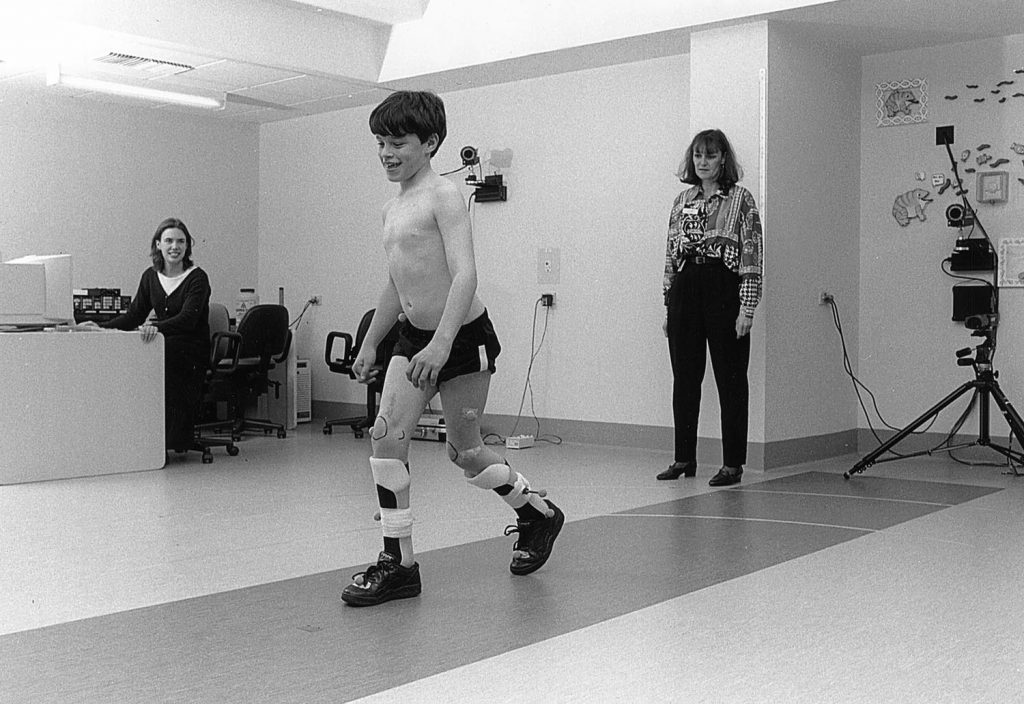
First Gait Laboratory in Australia
For treatment of orthopaedic conditions.
The University of Melbourne School of Graduate Nursing Established
Professorial Chair of Child Health Nursing based at the RCH.
RCH International Established
Based on the success of Professor Garry Warne AM’s annual lectures at the National Hospital of Paediatrics in Vietnam, a new department was established. Initially known as Children's Hospital Asia-Pacific Alliance, RCH International used grants to build programs, design facilities and provide training for Asian hospitals and their staff.

First National Sorry Day
May 26th, 1998
Image credit: Janelle Jakowenko
Publication of ‘RCH: a History of Faith, Science and Love’
Researched and written by historian Dr Peter Yule, the book is a comprehensive review of the history of the hospital.
Women’s and Children’s Healthcare Network Renamed Women’s and Children’s Health

Murdoch Children’s Research Institute
The Murdoch Institute and the hospital partnered to form the MCRI, a key relationship and research arm for the hospital.
Image credit: Robert Reitmaier
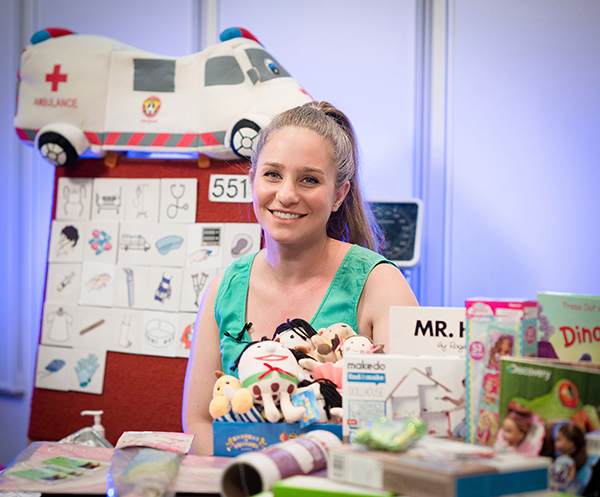
‘Hospital Lingo’ First Aired
Now a popular weekly hospital television segment, the interactive show aims to reduce patient anxiety through familiarisation with hospital apparatus, while also providing entertainment.
[Proudly sponsored by the team and customers of Woolworths.]
Image credit: Alvin Aquino
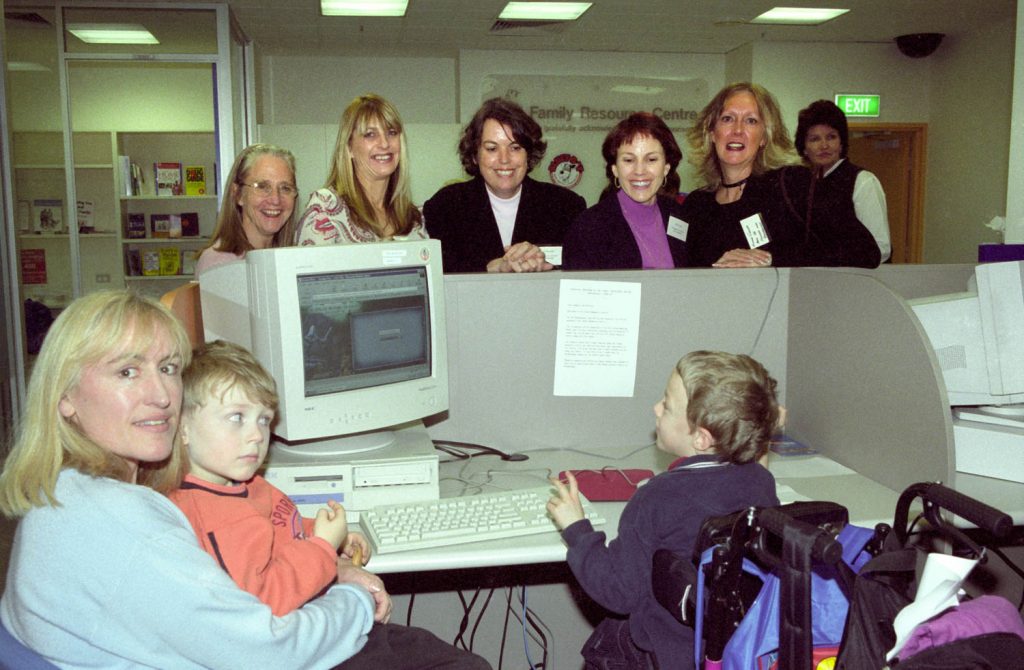
Establishment of the Family Resource Centre
Now known as the Family Hub, the space provides space and entertainment for families spending time at the hospital.
Image credit: Peta Philp
Independent Governance
The hospital transitioned to independent governance after nine years as part of Women’s and Children’s Health partnership with the Women’s Hospital.
Short Stay Unit Established
Designed to streamline the admission of patients who present to the Emergency Department in need of short-term care.
First Hospital in Australia to Offer Ventricular Assist Devices (VAD) to Children
VAD was used to replace the function of a failing heart while a patient waited for a heart transplant.
Indonesian Tsunami Recovery
RCH International entered into an agreement with World Vision Australia to assist the Indonesian government in the recovery from the 2004 Boxing Day tsunami.
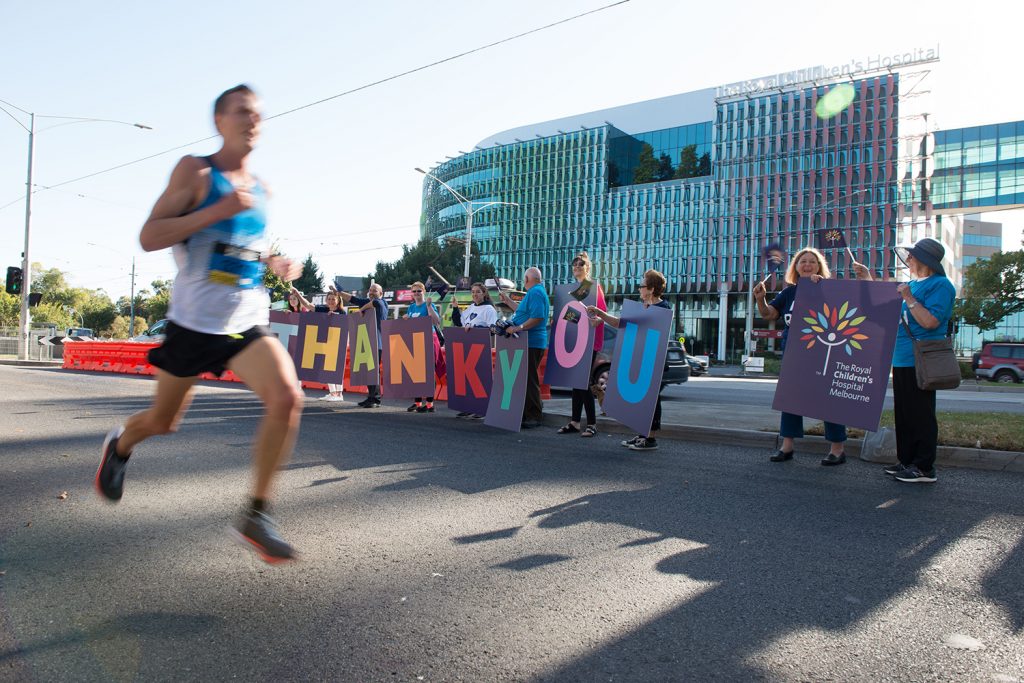
Inaugural Herald Sun / CityLink ‘Run for the Kids’
Raised more than $400,000 for the hospital.
Image credit: Alvin Aquino

Plans for New Hospital Building Unveiled
First soil turned on site at 50 Flemington Road, attended by Chairman Tony Beddison AO, VIC Premier John Brumby AO, and Minister for Health Daniel Andrews.
Image credit: RCH Medical Imaging
Conjoined Twins Trishna and Krishna Were Separated in a 30-hour Surgery
Black Saturday Bushfires
February 7th, 2009
Tragically, one hundred and seventy-three people in Victoria lost their lives.
The Hospital Became 100% Smoke Free

New Premises Officially Opened
October 26th, 2011
Queen Elizabeth II opened the new hospital premises at 50 Flemington Road, Parkville.
Image credit: Robert Reitmaier

Patients Moved to the New Parkville Building
November 30th, 2011
The move was meticulously planned to ensure that services and care were uninterrupted.
Image credit: Alvin Aquino
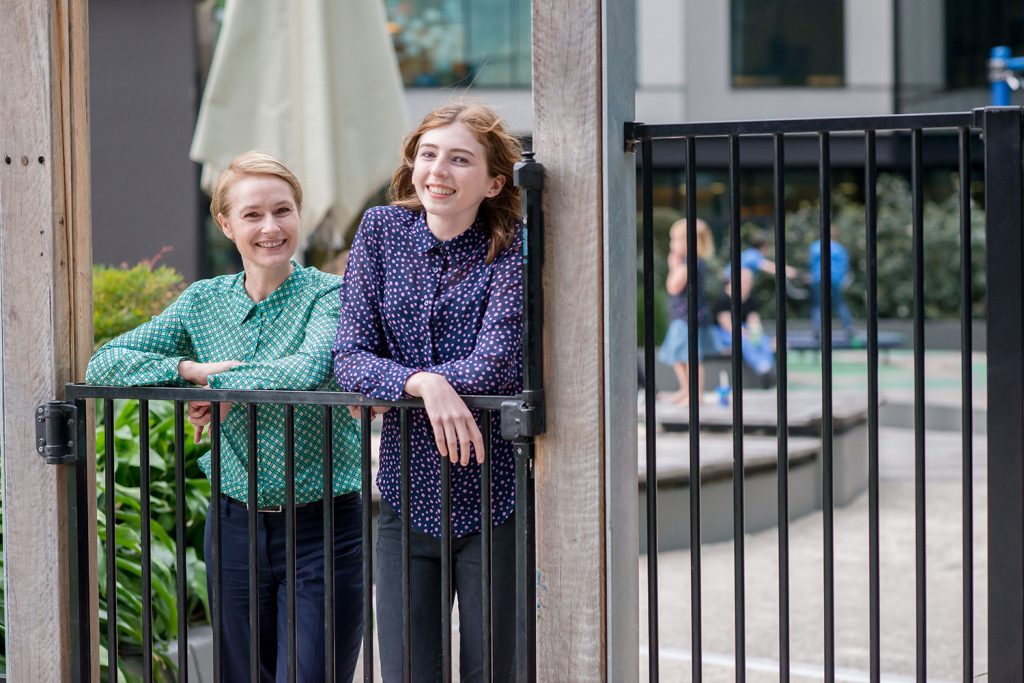
The Gender Service Established
Established to help improve the physical and mental health outcomes of patients who are trans or gender diverse.
Image credit: Alvin Aquino
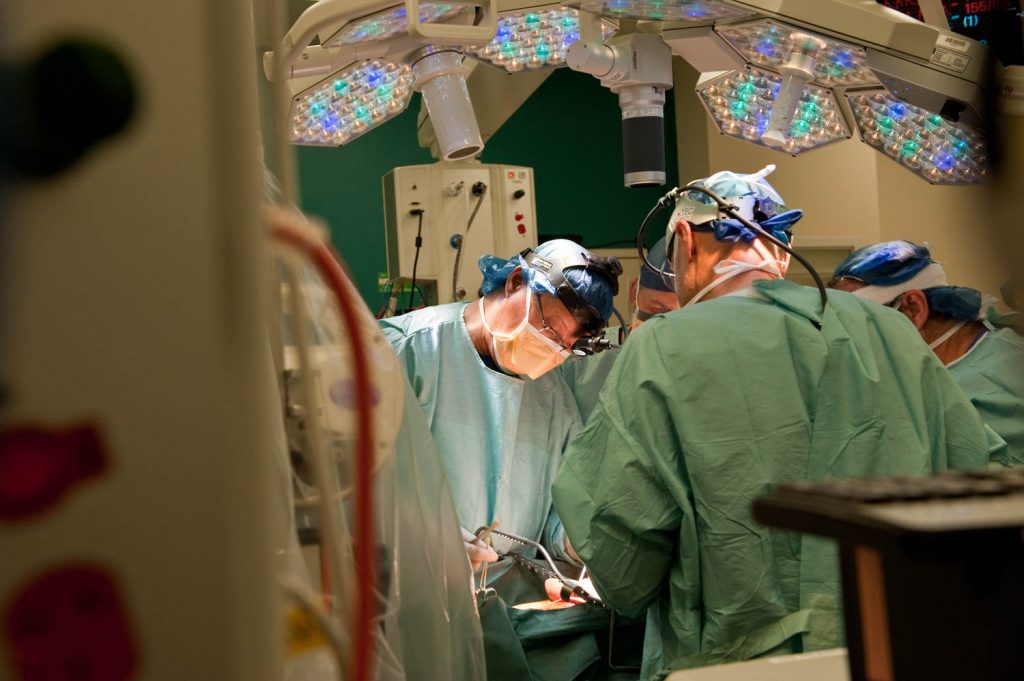
First Paediatric Intestinal Transplant
A multi-organ operation, completed in collaboration with staff from Austin Hospital.
Image credit: Alvin Aquino
RCH National Child Health Poll Commences
A quarterly, national survey is conducted to shed light on everyday life in Australian households.
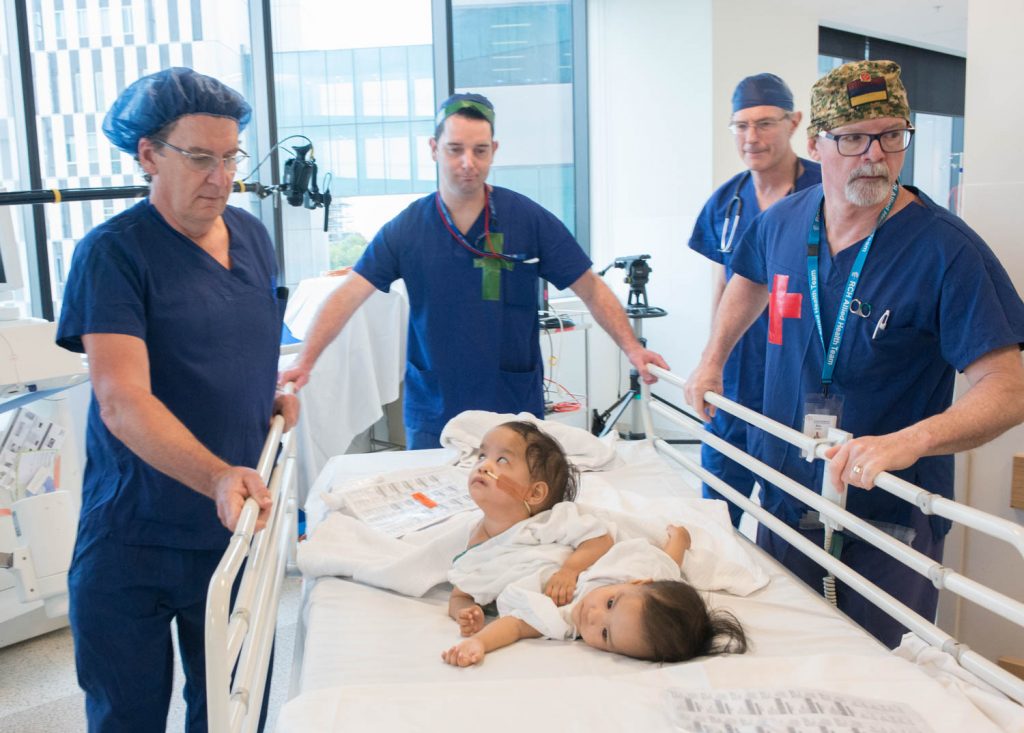
Conjoined Twins Nima and Dawa Palden Separated
Image credit: Alvin Aquino
Cancer-killing CAR T-cell Immunotherapy
This therapy was brought into use at the hospital, making it freely available for the first time in Australia.

Coronavirus (COVID-19) Pandemic
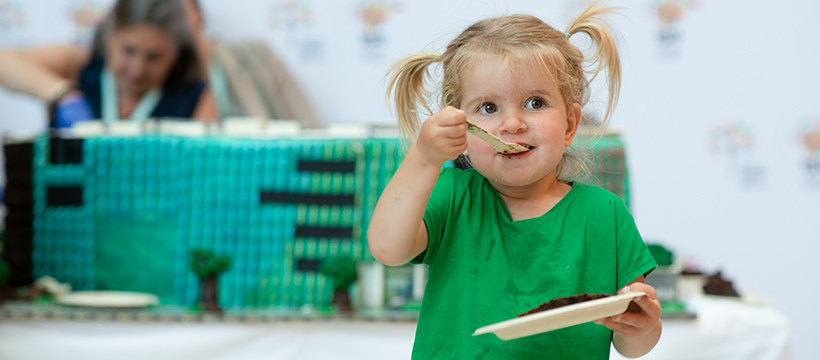
150th Anniversary Since Foundation
The hospital celebrates 150 years of great care for Victorian children.
Image credit: Alvin Aquino





































































